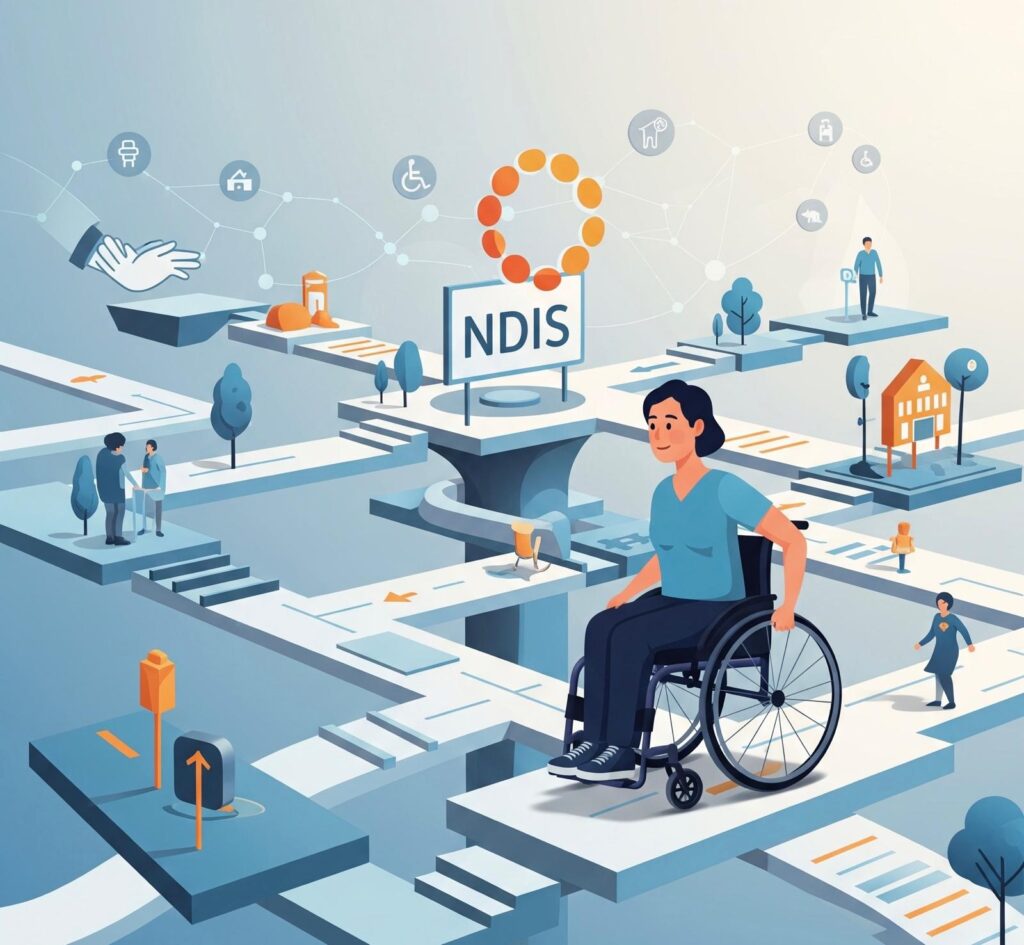If you want to haggle effectively—at a market, car yard, property inspection, or in a salary meeting—three things move the needle most: prepare a strong BATNA, use first-offer anchoring wisely, and ask great questions (then be quiet). Layer in MESO offers, goal setting, framing, and cultural awareness for ethical, repeatable wins.
(Fisher & Ury; Tversky & Kahneman; Galinsky & Mussweiler; Leonardelli et al.; Huang et al.)
Why “Haggling” is Just Applied Psychology
Haggling (or bargaining) is often seen as a distributive negotiation over price, but real-world deals often include integrative elements—timing, extras, warranties, delivery, service, payment terms.
The biggest mistake is treating every negotiation as a fixed-sum tug-of-war (“if you win, I lose”). Research shows people systematically fall for this fixed-pie bias, missing value-creating trades (Thompson & Hastie, 1990).
Step 1 — Do the Boring Prep That Wins the Exciting Deal
Know Your BATNA (Your “Walk-Away”)
Your Best Alternative to a Negotiated Agreement is the leverage you carry in your back pocket. Compare any offer to your BATNA, concede less under pressure, and avoid bad deals (Fisher, Ury & Patton).
How to operationalise:
- Price-shop 3–5 comparable options; lock at least one real alternative.
- Pre-decide your reservation point (don’t reveal it).
- Bring proof (quotes, listings) to justify your stance.
Set Specific, Challenging Goals
Negotiators who set clear, ambitious goals (not “do my best”) achieve better outcomes (Zetik & Stuhlmacher, 2002, meta-analysis).
Step 2 — Use First-Offer Anchoring (But Don’t Overplay It)
Decades of evidence show the first offer can anchor the entire bargaining zone—to the maker’s advantage (Galinsky & Mussweiler, 2001).
Do:
- Go first if researched and can justify a number.
- Be assertive, not absurd: extreme anchors can backfire (Loschelder et al., 2014/2011).
Make anchors work harder with precision:
- Precise numbers (e.g., $14,980 vs $15,000) signal knowledge and reduce concessions (Mason et al., 2013).
- Too much precision can reduce engagement; balance is key (Lee et al., 2018; Yan et al., 2017).
Pro move: Offer a bolstering range (e.g., “$50–54k”) to secure better settlements without damaging relationships (Ames & Mason, 2015).
Step 3 — Trade Smart with MESO Offers
MESO (Multiple Equivalent Simultaneous Offers): Present 2–3 packages you value equally.
Example template:
“Here are a few options that work for me:
Option A: $X with pickup this week.
Option B: $X+200 including delivery and 12-month warranty.
Option C: $X-150 if we remove [extra].
Which is closer to what you had in mind?”
MESOs reveal priorities, strengthen your anchor, and often improve economic and relational outcomes (Leonardelli et al., 2017).
Step 4 — Ask Great Questions, Then Use Strategic Silence
Ask the questions that money hides:
- Question-asking increases liking and surfaces information for integrative trades (Huang et al., 2017).
- Use hypotheticals: “Hypothetically, if I could pick up today, what would it take to include the roof racks?” (Grigorov & Snoeck Henkemans, 2019)
Add silence to your toolkit:
- Short, intentional pauses help both sides reflect and find value (Leibel et al., MIT Sloan summary).
Step 5 — Frame the Deal So Loss Aversion Works for You
People are loss averse: losses loom larger than equal-sized gains (Prospect Theory).
- Frame offers to avoid losses, e.g., “lock in today’s price to avoid next month’s increase” (Kahneman & Tversky, 1979; Tversky & Kahneman, 1981).
Step 6 — Manage Emotions (Yours and Theirs)
Emotions are social information; displays of anger or happiness shift concessions (Van Kleef et al., 2004).
- Use calmly firm affect to signal resolve; avoid threats.
- If escalation occurs, name the dynamic, return to objective criteria, or take a break.
Step 7 — Respect Culture and Context
Culture shapes what counts as “reasonable,” directness, and haggling norms.
- “Tighter” cultures: stricter norms, justify changes clearly.
- “Looser” cultures: creativity and informal trades are welcome (Gelfand et al., 2011; 2015).
Step 8 — Navigate Time Pressure and Deadlines
Time pressure can reduce integrative agreements; balanced deadlines help, frantic ones hurt (De Dreu, 2003; Karagözoglu & Kocher, 2019).
Tactics:
- Buy time: “I need 20 minutes to check something.”
- Use soft deadlines to create momentum.
Step 9 — Be Mindful of Social Backlash Dynamics
Women may face penalties for pushing hard in some negotiations; justification and communal framing mitigate costs (Bowles et al., 2007).
Example:
“I’m asking for $X–Y because it aligns with market data and ensures I can deliver at the standard you expect.”
Ethical Haggling (Why It Wins Long-Term)
Short-term “gotcha” tactics burn trust. Integrative strategies—MESOs, questions, silence, framing, cultural sensitivity—create value, reduce remorse, and increase repeat business.
Quick-Start Playbook
- Prep BATNA & goal: decide your target, reservation point, and alternative.
- Open first (if informed) with precise number or bolstering range.
- Trade with MESOs to discover priorities.
- Ask, then pause: “What would it take to include delivery?”
- Re-frame: highlight losses avoided or certainty gained.
- Watch time: use deadlines softly and strategically.
FAQ
Should I always make the first offer?
- Mostly yes, if informed. Otherwise, invite them to go first, then re-anchor.
Precise or round numbers?
- Use credible precision to signal knowledge but avoid hyper-precision.
Is silence manipulative?
- No. Brief, purposeful silence improves joint outcomes.
Glossary
- Haggling skills / negotiation tactics / how to haggle
- BATNA, reservation point, ZOPA
- Anchoring, first-offer strategy, bolstering range
- MESO (Multiple Equivalent Simultaneous Offers)
- Loss aversion, framing, fixed-pie bias
- Strategic silence, question-asking, cultural tightness–looseness
References (Harvard Style)
Ames, D.R. & Mason, M.F. (2015) ‘Tandem anchoring: informational and politeness effects of range offers in social exchange’, Journal of Personality and Social Psychology, 108(2), pp. 256–274.
Bowles, H.R., Babcock, L. & Lai, L. (2007) ‘Social incentives for gender differences in the propensity to initiate negotiations: Sometimes it does hurt to ask’, Organizational Behavior and Human Decision Processes, 103(1), pp. 84–103.
De Dreu, C.K.W. (2003) ‘Time pressure and closing of the mind in negotiation’, Organizational Behavior and Human Decision Processes, 91(2), pp. 146–159.
Fisher, R., Ury, W. & Patton, B. (2011) Getting to Yes: Negotiating Agreement Without Giving In (updated ed.). New York: Penguin.
Galinsky, A.D. & Mussweiler, T. (2001) ‘First offers as anchors: The role of perspective-taking and negotiator focus’, Journal of Personality and Social Psychology, 81(4), pp. 657–669.
Gelfand, M.J., Raver, J.L., Nishii, L. et al. (2011) ‘Differences between tight and loose cultures: A 33-nation study’, Science, 332(6033), pp. 1100–1104.
Gelfand, M.J., Severance, L., Fulmer, C.A. & Al Dabbagh, M. (2015) ‘The science of culture and negotiation’, Current Opinion in Psychology, 3, pp. 60–65.
Grigorov, D.N. & Snoeck Henkemans, A.F. (2019) ‘Hypothetical questions as strategic devices in negotiation’, Negotiation Journal, 35(3), pp. 363–385.
Huang, K., Yeomans, M., Brooks, A.W., Minson, J. & Gino, F. (2017) ‘It doesn’t hurt to ask: Question-asking increases liking’, Journal of Personality and Social Psychology, 113(3), pp. 430–452.
Karagözoglu, E. & Kocher, M.G. (2019) ‘Bargaining under time pressure from deadlines’, Experimental Economics, 22(2), pp. 419–440.
Lee, S., Loschelder, D.D., Schweinsberg, M., Mason, M.F. & Galinsky, A.D. (2018) ‘Too precise to pursue: How precise first offers create barriers-to-entry in negotiation’, Organizational Behavior and Human Decision Processes, 147, pp. 146–165.
Leonardelli, G.J., Gu, J., McRuer, G., Medvec, V.H. & Galinsky, A.D. (2017) ‘Multiple equivalent simultaneous offers (MESOs) reduce the negotiator dilemma: How a choice of first offers increases economic and relational outcomes’, Organizational Behavior and Human Decision Processes, 141, pp. 16–33.
Mason, M.F., Lee, A.J., Wiley, E.A. & Ames, D.R. (2013) ‘Precise offers are potent anchors: Conciliatory counteroffers and attributions of knowledge in negotiations’, Journal of Experimental Social Psychology, 49(4), pp. 759–763.
Thompson, L. & Hastie, R. (1990) ‘Social perception in negotiation’, Organizational Behavior and Human Decision Processes, 47(1), pp. 98–123.
Tversky, A. & Kahneman, D. (1974) ‘Judgment under uncertainty: Heuristics and biases’, Science, 185(4157), pp. 1124–1131.
Tversky, A. & Kahneman, D. (1981) ‘The framing of decisions and the psychology of choice’, Science, 211(4481), pp. 453–458.
Van Kleef, G.A., De Dreu, C.K.W. & Manstead, A.S.R. (2004) ‘The interpersonal effects of emotions in negotiations: A motivated information processing approach’, Journal of Personality and Social Psychology, 87(4), pp. 510–528.







